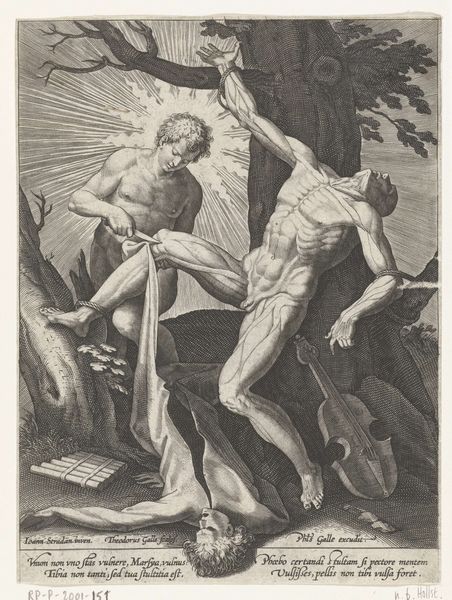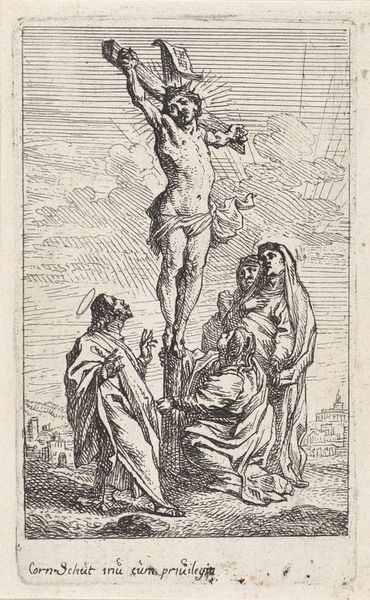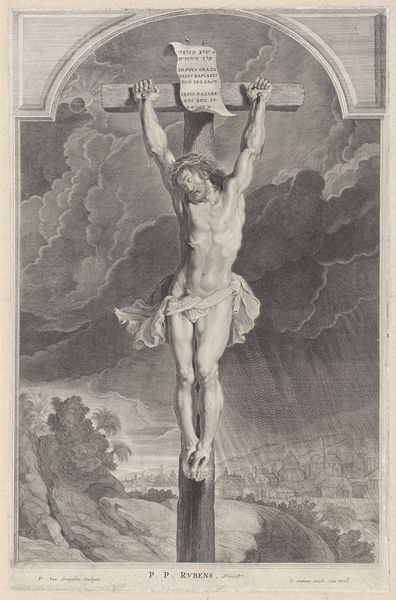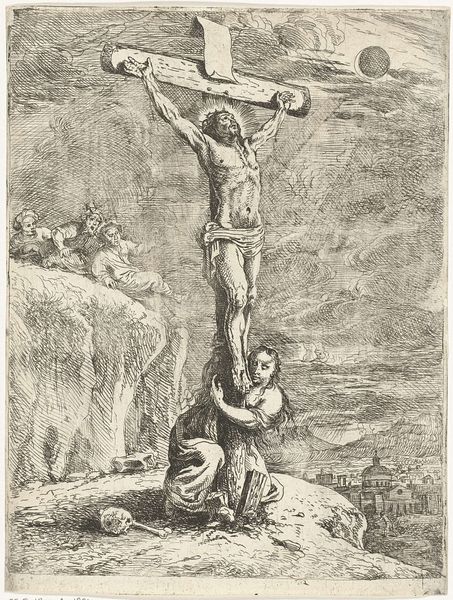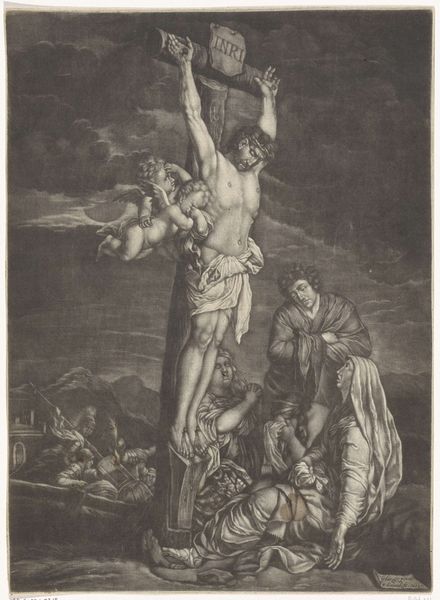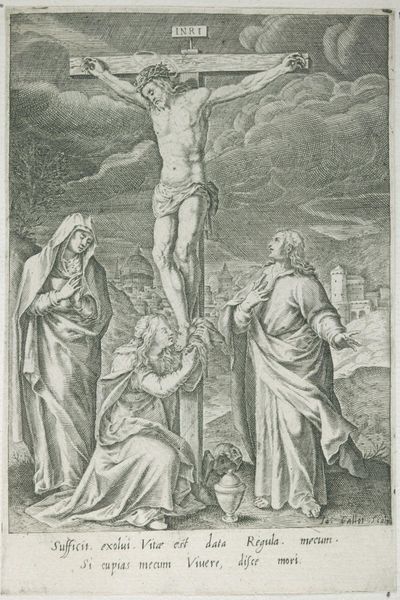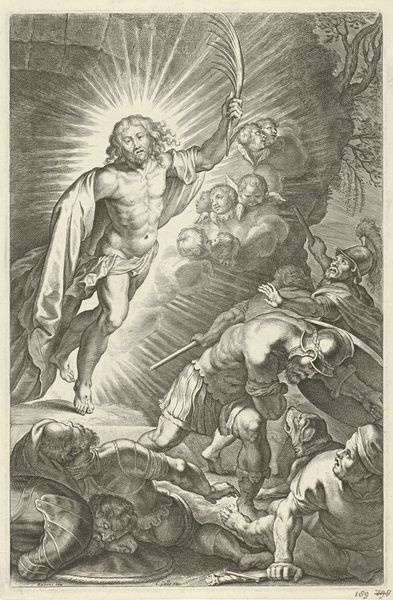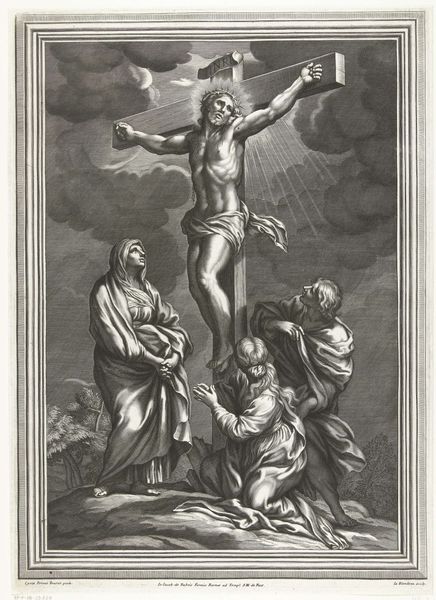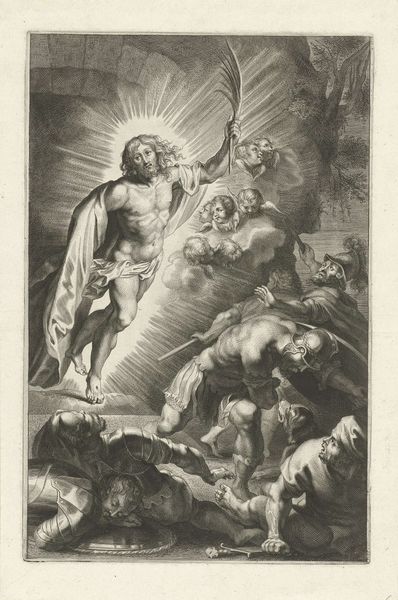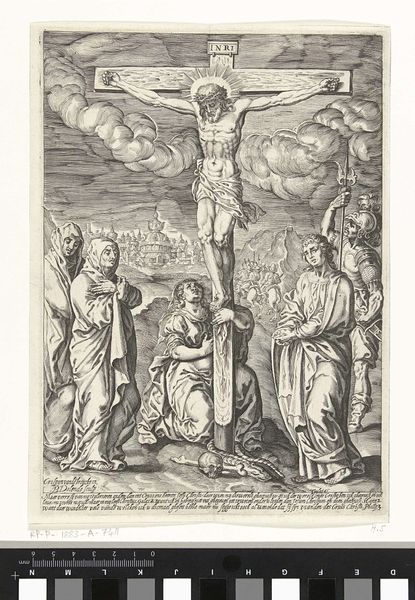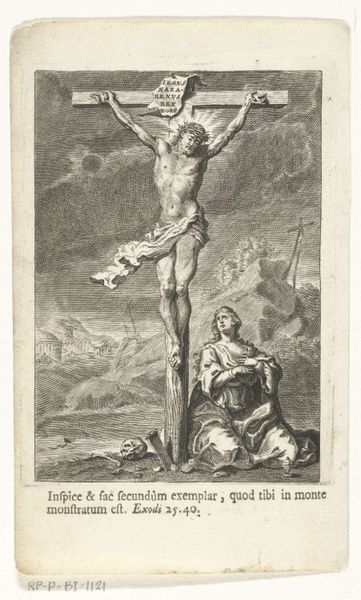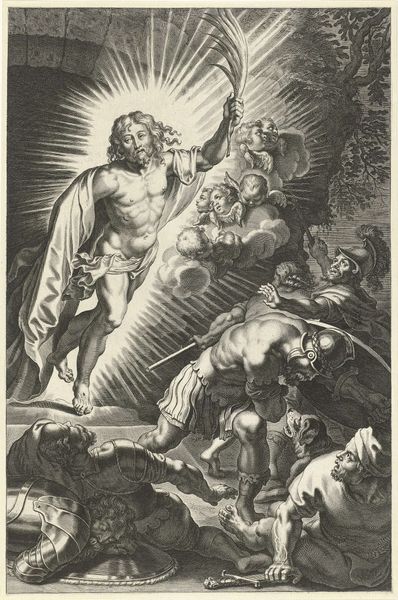
print, engraving
#
baroque
# print
#
old engraving style
#
landscape
#
figuration
#
history-painting
#
engraving
Dimensions: height 205 mm, width 148 mm
Copyright: Rijks Museum: Open Domain
Editor: Here we have "Christus aan het kruis," or "Christ on the Cross," an engraving likely created sometime between 1560 and 1650, and currently housed at the Rijksmuseum. The somber imagery really strikes me; what visual elements do you focus on when considering a work like this? Curator: Primarily, the articulation of line and form. Note how the engraver utilizes densely packed lines to create a sense of volume and shadow on Christ’s body and drapery, contrasted with the sparser lines suggesting the atmospheric perspective of the distant landscape. The formal relationships – the stark vertical of the cross bisecting the composition, juxtaposed against the kneeling figure and scattered skulls below – are carefully considered. Editor: So you’re more interested in how the image is constructed rather than what it’s depicting? Curator: Indeed. Consider the contrast between the textures – the rough hewn cross versus the smoothness implied in the figure's skin and the garments. This tension is further enhanced by the balanced, almost symmetrical composition, which contributes to the print's overall impact. How does this structural approach inform your understanding? Editor: It makes me see it less as a religious scene, and more as a carefully organized study of light, shadow, and texture, playing with a viewer's sense of space and depth. Curator: Precisely. By isolating these visual components, we appreciate the artist's mastery over the medium and can begin to discern the theoretical underpinnings influencing their artistic choices. It reframes our encounter, doesn't it? Editor: It really does. I appreciate learning to analyze art in a different way, separate from its religious themes, and focus more on the composition and visual impact of a piece.
Comments
No comments
Be the first to comment and join the conversation on the ultimate creative platform.
